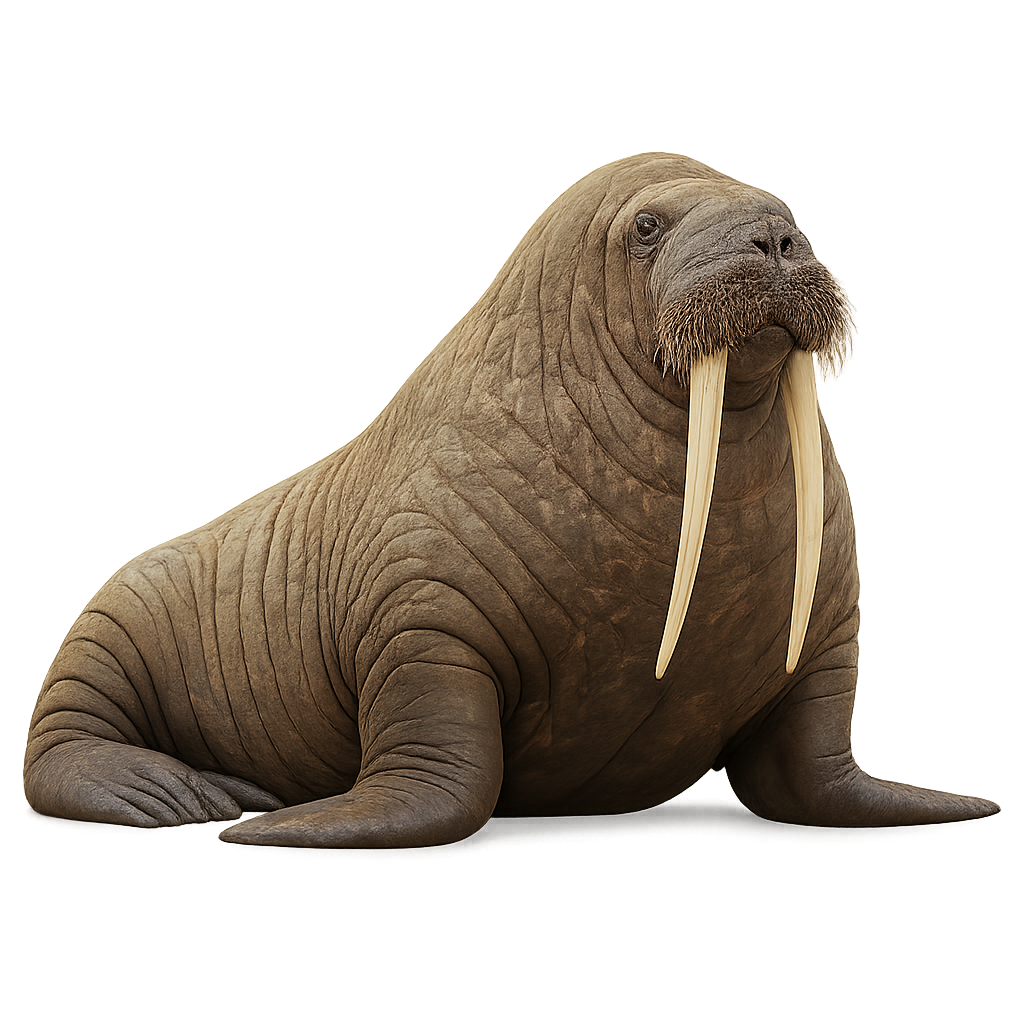Observe and photograph a species in its natural habitat
Learn where and when to observe a species in the wild, how to recognize it in the field, and what habitats it lives in. Get photography tips adapted to its behavior and capture stunning images without disturbing the animal. For full details, open the complete profile in the WildlifePhotographer app.
Walrus
Scientific name: Odobenus rosmarus

IUCN Status: Vulnerable
Family: OTARIIDAE
Group: Birds
Shyness: Suspicious
Safe distance: 50 m
Breeding season / Courtship: 01.12-28.02
Gestation: 15 à 16 mois
Births: 01.06-31.07
Habitat:
Arctic and subarctic coasts, sandy beaches, and ice floes
Description:
The Walrus is a large marine mammal from the Odobenidae family, measuring between 3 and 4 meters in length and weighing between 800 and 1,500 kg. Males are generally much larger than females. This cetacean is distinguished by its long tusks, which can reach up to 1 meter in length in adult individuals, and its large, sensitive whiskers that help detect food on the ocean floor. The Walrus has short fur, typically brown or gray, but its skin is covered by a thick layer of blubber that helps it stay warm in the icy waters of the Arctic and North Atlantic. Walruses primarily inhabit coastal regions, where they feed mostly on mollusks, crustaceans, and fish. They spend a large part of their time on the ice, where they rest and socialize in large groups. While their population remains relatively stable, walruses face threats such as hunting, habitat loss, and the effects of climate change on their environment.
Recommended lens:
>=200 mm
Photography tips:
To photograph the walrus, use a telephoto lens to capture its behavior on beaches or ice floes. Early in the morning or at sunset, the light is ideal. Make sure to respect the safety distance to avoid disturbing the colonies.
Ready to take action?
Choose your platform and start your free trial today



